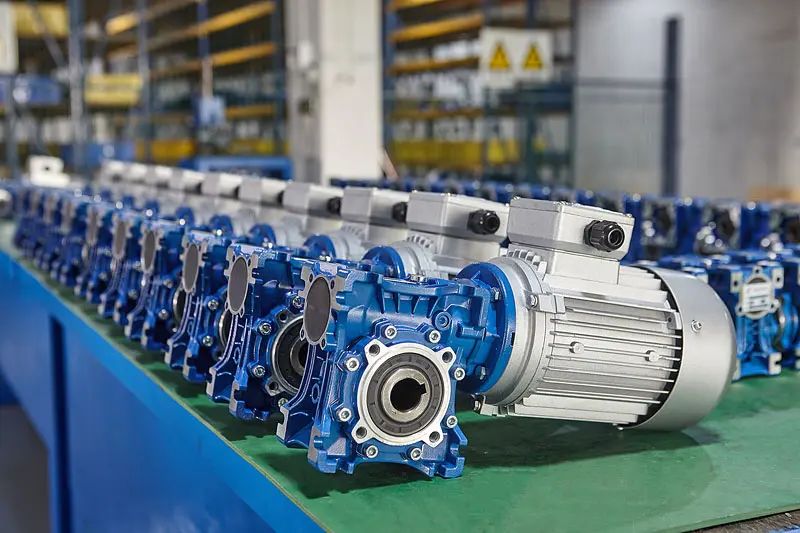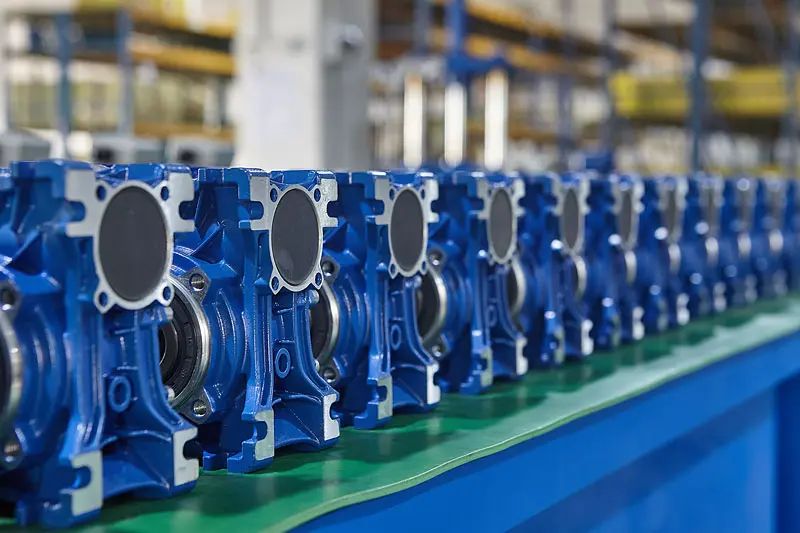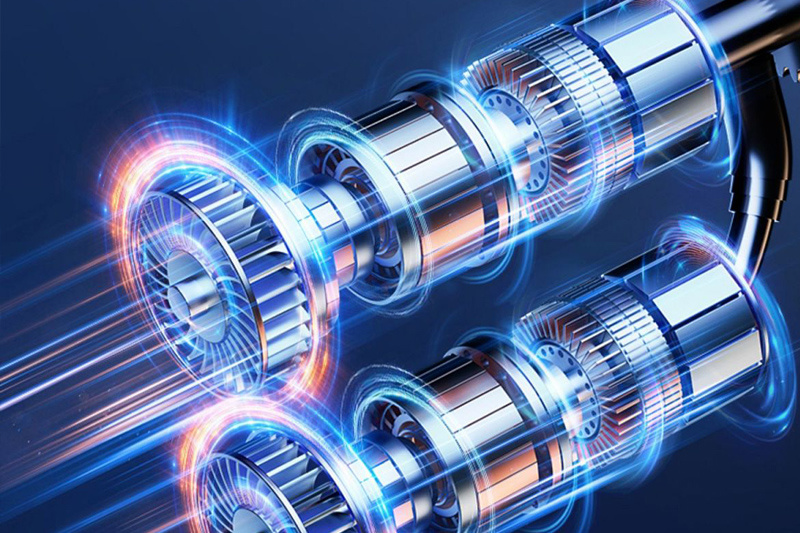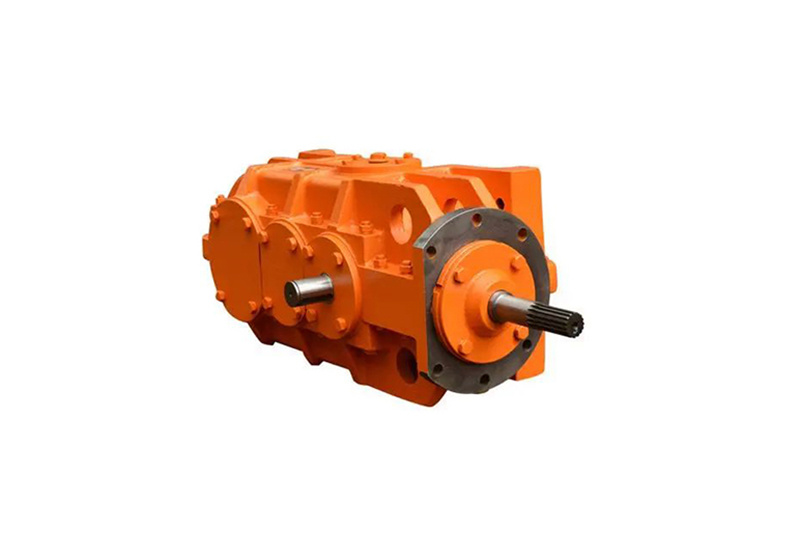The current development status and trend of industrial robots
Release Time:
Mar 28,2024
1、 The Current Status and Development Trends of Industrial Robot Technology at Home and Abroad Industrial robots are the most typical digital equipment for mechatronics integration, with high technological added value and a wide range of applications. As a supporting technology for advanced manufacturing and an emerging industry in the information society, they will play an increasingly important role in future production and social development. Foreign experts predict that the robotics industry is a new large-scale high-tech industry that has emerged after automobiles and computers. According to statistics from the United Nations Economic
1、 The Current Status and Development Trends of Industrial Robot Technology at Home and Abroad
Industrial robots are the most typical digital equipment for mechatronics integration, with high technological added value and a wide range of applications. As a supporting technology for advanced manufacturing and an emerging industry in the information society, they will play an increasingly important role in future production and social development. Foreign experts predict that the robotics industry is a new large-scale high-tech industry that has emerged after automobiles and computers. According to statistics from the United Nations Economic Commission for Europe (UNECE) and the International Federation of Robotics (IFR), the global robot market has a promising outlook. Since the second half of the 20th century, the global robot industry has maintained a steady growth momentum. In the 1990s, the development speed of robot products accelerated, with an average annual growth rate of around 10%. In 2004, the growth rate reached a record high of 20%. Among them, the growth rate of robots in Asia is the most prominent, reaching as high as 43%.
The current development status and trend of industrial robots
User order index for industrial robots in various regions (based on 1996 as 100)
In recent years, there have been several trends in the development of robotics in foreign countries:
1. The performance of industrial robots continues to improve (high speed, high precision, high reliability, easy operation and maintenance), while the price of individual machines continues to decline, with the average price dropping from $103000 in 1991 to $65000 in 1997.
2. Mechanical structures are developing towards modularity and reconfigurability. For example, the servo motor, reducer, and detection system integrated in the joint module; Construct the entire robot system by reassembling the joint module and connecting rod module; Modular assembly robot products have already been launched in foreign countries.
3. The development of industrial robot control systems towards PC based open controllers facilitates standardization and networking; The integration of components has been improved, and the control cabinet is becoming increasingly compact, adopting a modular structure; Greatly improves the system's scalability, ease of operation, and maintainability.
4. The role of sensors in robots is becoming increasingly important. In addition to traditional sensors such as position, speed, and acceleration, assembly and welding robots also use sensors such as vision and force sensing. Remote control robots use a fusion technology of multiple sensors such as vision, sound, force sensing, and touch to model the environment and make decisions; The multi-sensor fusion configuration technology has been maturely applied in productization systems.
The role of virtual reality technology in robots has evolved from simulation and rehearsal to process control, such as creating a sense of being in a remote work environment for remote control robot operators to manipulate the robot.
Our country's industrial robots started from the "Seventh Five Year Plan" scientific and technological research in the 1980s. With the support of the country, through the "Seventh Five Year Plan" and "Eighth Five Year Plan" scientific and technological research, we have basically mastered the design and manufacturing technology of robot operators, control system hardware and software design technology, kinematics and trajectory planning technology. We have produced some key components of robots and developed robots for painting, arc welding, spot welding, assembly, and transportation; Among them, more than 130 sets of spray painting robots have been widely applied on nearly 30 automatic spray painting production lines (stations) in more than 20 enterprises, and arc welding robots have been applied on welding assembly lines in automobile manufacturing plants. However, overall, there is still a certain gap between China's industrial robot technology and its engineering application level compared to foreign countries, such as lower feasibility compared to foreign products; Robot application engineering started relatively late, with narrow application areas and a gap in production line system technology compared to foreign countries; In terms of application scale, China has installed about 200 domestically produced industrial robots, accounting for about four thousandths of the world's installed robots. The above reasons are mainly due to the lack of a robotics industry. Currently, robot production in China is based on user requirements, with "one customer, one redesign". There are many varieties and specifications, small batches, low degree of universality of components, long supply cycles, and high costs, as well as unstable quality and feasibility. Therefore, it is urgent to solve the key technologies in the early stage of industrialization, comprehensively plan the products, do a good job in serialization, generalization, and modular design, and actively promote the industrialization process.
2、 The application fields of industrial robots are becoming increasingly widespread
After more than 40 years of development, industrial robots have been applied in more and more fields. In the manufacturing industry, especially in the automotive industry, industrial robots have been widely used. Robots have gradually replaced manual operations in rough manufacturing (stamping, die-casting, forging, etc.), mechanical processing, welding, heat treatment, surface coating, loading and unloading, assembly, inspection, and warehouse stacking.
With the development of industrial robots in deeper and wider directions, as well as the improvement of robot intelligence, the application scope of robots is constantly expanding. It has been promoted from the automotive manufacturing industry to other manufacturing industries, and further to various non manufacturing industries such as mining robots, construction robots, and water and electricity system maintenance and repair robots. In addition, the application of robots in fields such as national defense and military, medical and health, and life services is also increasing, such as unmanned reconnaissance aircraft (aircraft), security robots, medical robots, and home service robots, all of which have application examples. Robots are playing an important role in improving the quality of human life.
3、 The development trend of industrial robots
The practical use of industrial robots in many production fields has proven that they play a remarkable role in improving the level of production automation, labor productivity, product quality, and economic benefits, as well as improving the working conditions of workers. They have attracted widespread attention from countries and people at all levels of society around the world. In the new century, the robotics industry will inevitably experience faster development and wider applications.
1. The Technological Development Trends of Industrial Robots
From the products launched by robots around the world in recent years, it can be seen that industrial robot technology is developing towards intelligence, modularity, and systematization, with the main development trends being modular and reconfigurable structures; The openness, PCization, and networking of control technology; Digitalization and decentralization of servo drive technology; The practicality of multi-sensor fusion technology; Optimization of work environment design, flexibility of tasks, and networking and intelligence of systems.
2. The Industrial Development Trends of Industrial Robots
According to UNECE/IFR forecasts, by 2007, the number of newly installed robots worldwide will increase from 81800 in 2003 to 106000 in 2007, with an average annual growth of 7%. Among them, the sales of industrial robots in Japan will increase from 31600 in 2003 to 41000 sets in 2007; From 2003 to 2007, the number of industrial robots in Europe will increase from 27100 in 2003 to 34000 in 2007; The industrial robot market in North America grew an average of 5.8% annually from 2003 to 2007, and is expected to grow to 16000 sets by 2007.
4、 Exploration of the Development Model of Industrial Robot Industry
Throughout the development process of industrial robotics industry in various countries around the world, it can be summarized into three different development models, namely the Japanese model, the European model, and the American model:
1. Japanese mode
The characteristic of this model is that each person performs their own duties and completes turnkey projects in a layered manner. The main goal of robot manufacturers is to develop new types of robots and mass produce high-quality products, and their subsidiaries or engineering companies in society design and manufacture complete sets of robot systems required by various industries, and complete turnkey projects;
2. European model
The characteristic of this model is a turnkey project package. The production of robots and the system design and manufacturing required by users are all completed by robot manufacturers themselves;
3. American model
The characteristic of this model is the combination of procurement and complete design. The United States generally does not produce ordinary industrial robots domestically. When enterprises need robots, they are usually imported by engineering companies, and then design and manufacture supporting peripheral equipment to complete turnkey projects.
Since the 1980s, China has been conducting comprehensive research on industrial robots in universities and research institutions, and has achieved many scientific research results in the past 20 years. However, due to the lack of organic collaboration with enterprises, influential products and large-scale industries have not yet been formed. At present, except for a Sino Japanese joint venture robot company that focuses on assembly, industrial robots with independent intellectual property rights are still being produced sporadically by universities or research institutions in China, and have not formed a climate. In the past decade, the price of imported robots has significantly decreased, which has had a certain impact on the development of industrial robots in China. Especially, ordinary industrial robots manufactured by China cannot compete with them in terms of price. Especially in the early stages of developing robots in China, there was no synchronous development of corresponding component industries, which resulted in domestic enterprises relying only on imported components in the production of robots, further weakening the price competitiveness of Chinese enterprises.
It is worth exploring what path China's robotics industry should take and how to establish its own development model. In the summary report on the current situation and development strategy of welding production in China's manufacturing industry, completed and publicly released by the Chinese Academy of Engineering in December 2003, it was believed that China should start with the "American model" and gradually move towards the "Japanese model" when conditions are ripe.
5、 The Prospects of Robots in China
It should be said that China is the country that needs and does not need robots the most. China has a large population and abundant and inexpensive labor resources. From this perspective, hiring an expensive and bulky robot is not as cheap as hiring a person. However, in order for China to become a world power, it must use the least resources to do more. Our enterprises must adopt high-tech as much as possible to produce more efficiently and win with high competitiveness. This requires a lot of robots, and humans do not have the same precision, accuracy, and efficiency as robots. There may be people unemployed, but creating more job opportunities will result in greater benefits for society. I believe that in the near future, the robotics industry will become a pillar industry of the country's economy, just like cars. The United States is the "country on cars", and China can become the "country standing on the shoulders of robots".
6、 Hopes and difficulties in the development of robots
Robot technology is an important component of high-tech, and its industrialization process has just begun in China. Although certain achievements have been made, there are still many difficulties and shortcomings, so it requires more attention and support from various aspects.
National policy support is an important prerequisite for accelerating the industrialization of high-tech. According to the relevant departments of the Chinese government, efforts should be organized to conduct thorough investigations and research. Based on this, practical and feasible policies should be formulated to promote and apply robots, as well as to promote robot research and development. Implement supportive policies for the robotics industry in terms of taxation, investment, and loans. The Japanese government has formulated policies and taken a series of measures to encourage enterprises to use robots, and the experience of Japanese robots in expanding the domestic market is worth learning from. In addition, for robot users, a certain amount of financial subsidies can be considered to encourage purchases. In order to avoid work-related accidents and occupational diseases caused by dangerous and harsh working environments, and to protect the physical and mental safety of workers, special occupations such as spraying and casting can be forcibly replaced by industrial robots through labor laws. This can greatly increase the demand for industrial robots.
The industrialization of robots in our country must be driven by the market. As a high-tech industry, the development of robots is closely related to the production and economic conditions of society. The research and development of robots should prioritize the application of robots based on the principle of high technological feasibility, and use this as a breakthrough point to penetrate and expand into other fields.
What Else Might You Learn?







